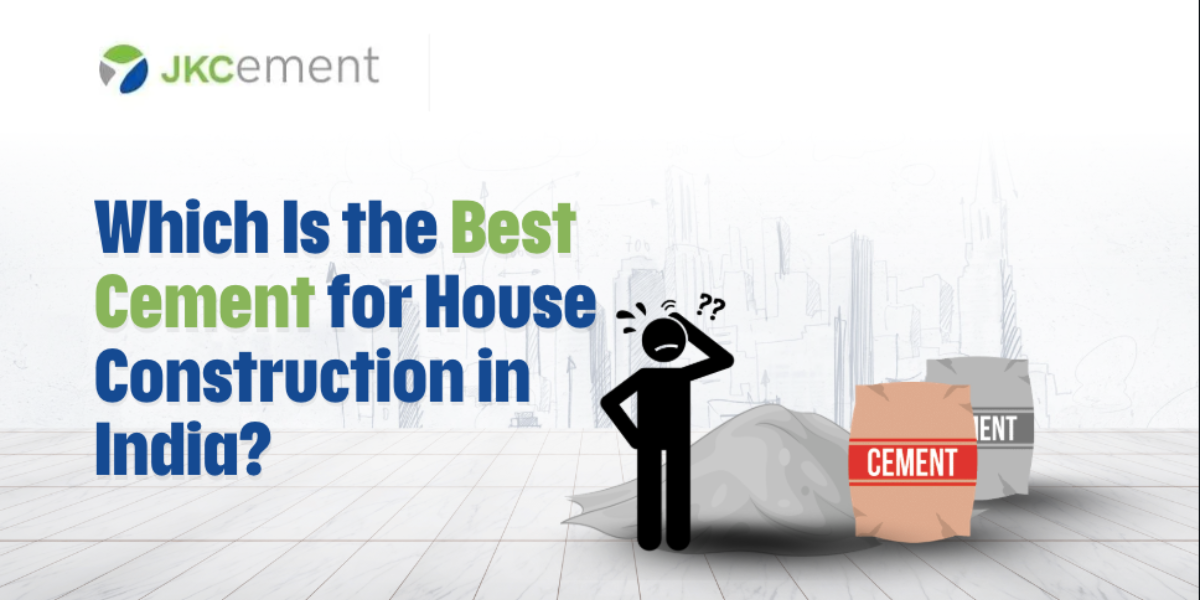When you’re building a home in India, one of the first big questions is- which cement should you use? Three main cement types that are popular in construction in India are- OPC cement, PPC cement, and PSC Cement. To have your structures show strength and long-lasting durability, knowing the difference between these is crucial, so you can decide which type of cement is best suited for your construction needs.
What Are OPC, PPC, and PSC?
OPC cement is the most common. Ordinary Portland Cement is made from clinker and gypsum and comes in grades like OPC 33, 43, or 53, which determine the strength gained after 28 days of curing.
PPC cement is Portland Pozzolana Cement, made from fly ash or volcanic ash into the clinker mix. It sets slower but gives better durability and moisture resistance.
PSC Cement is Portland Slag Cement, made by mixing slag (a waste from steel plants) into OPC. It holds resistance against chemicals and is ideal for countering coastal or industrial harsh environments.
Which One Fits House Construction?
This depends upon the kind of construction and the application needs of a structure. Each type has its strengths and benefits for specific construction.
OPC is best suited when:
- You are constructing beams, slabs and columns as it extends quick initial strength.
- You want certain strength for certain construction- OPC 43 is a go-to for most homes; OPC 53 is only for high-strength needs.
PPC is ideal when:
- You want a smoother plaster finish or need better water resistance.
- Houses in humid or rainy areas benefit a lot from PPC’s lower permeability.
PSC wins when:
- You’re near the coast or dealing with chemically aggressive soil.
- Your structure requires extra protection from external environments.
Many builders mix and match: OPC 43 for foundational work, then PPC for the walls and finishing. It’s practical, budget-smart, and helps your home last.
Why Choosing The Right Cement Matters
- It Can Save Costs: PPC is usually a bit cheaper per bag. PSC might cost more. Using the right type for the right spot helps control your construction cost per square foot.
- It Determines the Quality & Longevity: Poor cement choice can lead to cracks, dampness, or repainting. Choose wisely, and your home stays sturdy longer.
- It can Impact the Environment: PPC and PSC use industrial byproducts, so they’re more eco-friendly compared to traditional OPC.
Helpful Tips Before You Buy
- Check the bag: Make sure it clearly says OPC or PPC or PSC. Avoid faded or damaged packaging.
- Note the grade: OPC bags should say 33, 43, or 53 grade. Don’t assume higher grade is always better.
- Buy fresh: Cement older than 3 months loses performance—always check manufacturing dates.
- Choose trusted brands like JK Super Cement, UltraTech, or Ambuja. Counterfeits can cause major structural problems.
- Don’t pick OPC 53-grade unless your structural engineer asks for it—too much strength too fast can lead to cracks.
- Mix OPC and PPC smartly – OPC for structure, PPC for finishing.
- Always check the ballast, packing date, and whether the dealer is official.
If you’re asking about the best cement in India, JK Super Cement is known for its consistent quality. They offer both OPC and PPC variants, as well as PSC, and their bags are widely available in metros and smaller towns too.
By matching your cement choice to exactly where and how it’ll be used, you get strength, money savings, and fewer maintenance headaches. OPC, PPC, and PSC each have their place. Pick the right one, from a trusted brand like JK Super Cement, and your home’s foundation stays strong.
FAQs
- Can OPC and PPC cement be used in the same house project?
Yes, and many builders do that. OPC is often used for beams and slabs where strength is needed quickly, while PPC or PSC are great for finishing, walls, plastering, and areas that are exposed to moisture. Keep in mind not to mix them in the same mix.
- Is higher-grade cement always better?
Not really. For home construction, 43-grade is ideal. Higher grade means faster strength, but it also generates more heat and can crack, which you would want to avoid in home structures.
- Is JK Super Cement OPC or PPC?
JK Super Cement offers both OPC and PPC. Check the bag for which type it is, based on what stage of construction you’re at.
- What’s the most eco-friendly cement?
PSC cement and PPC cement are both better for the environment than OPC. They use industrial waste like slag and fly ash, which reduces the carbon footprint.
- How do I know if my contractor is using the right cement?
Simple questions like: “Is this OPC or PPC?”, “What grade is this?”, or “Is this good for waterproofing?” – will give a clear idea if the cement used is best suited. Also, check the packaging – it clearly says the type and grade. Don’t hesitate to verify the cement brand and type before bags are unloaded.

